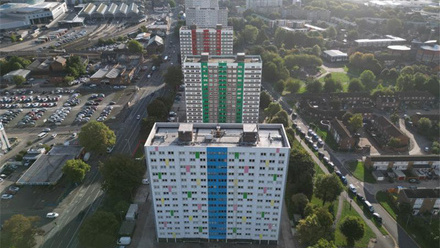Supreme Court ruling makes it easier to sue designers and builders for building safety defects
It is being seen as a victory for developers by making it easier to sue suppliers for historic building safety defects.
The judgement in the case of URS Corporation Ltd v BDW Trading Ltd is also expected to speed up the process of making homes safer. The ruling was on an appeal arising from litigation between developer BDW (Barratt Homes, David Wilson Homes etc.), and consultant engineering services provider URS. BDW had discovered defects in two sets of high-rise residential developments called 'Capital East' and 'Freemens Meadow' where URS had provided structural designs. URS appealed against the original court decision.
The developments were found to have various defects which BDW alleged resulted from failure by URS to exercise reasonable skill and care, representing a breach of its appointment contracts and common law negligence. Any claims against BDW would have been time-barred, but BDW considered the defects to be dangerous and in 2020-21, carried out remedial works to the developments, claiming the resulting costs from URS.
BDW's proceedings were issued before the Building Safety Act 2022 came into force. The developers claimed only in negligence as claims against URS in contract and under the Defective Premises Act 1972 (DPA) were time-barred.
Following a preliminary issue trial on the scope of URS' duty and issues of legal causation, a judgement was handed down on 22 October 2021 ([2021] EWHC 2796), that found the losses claimed fell within the scope of URS's duty and were recoverable in principle. The court also ruled that issues of legal causation were fact dependent and could only be determined at trial.
The Building Safety Act extended the limitation period under the DPA, and BDW sought to amend its claim to delete its previous admission that when the defects were discovered and remedial works undertaken, BDW's liability to third parties was time-barred. BDW also sought to claim against URS under the Defective Premises Act and to claim against URS for contribution under the Civil Liability (Contribution) Act 1978.
Permission to amend was granted by Adrian Williamson KC ([2022] EWHC 2966). URS appealed with the appeal court dismissing the appeals in a judgement handed down on 3 July 2023 ([2023] EWCA Civ 772).
Permission to appeal had been given on four issues:
Firstly, in relation to BDW’s claim in the tort of negligence against URS, has BDW suffered actionable and recoverable damage or is the damage outside the scope of the duty of care and/or too remote because it was voluntarily incurred (disregarding the possible impact of section 135 of the BSA)?
If the answer to that question is that the damage is outside the scope of the duty of care or is too remote, did BDW in any event already have an accrued cause of action in the tort of negligence at the time it sold the Developments?
Secondly, does section 135 of the BSA apply in the present circumstances and, if so, what is its effect?
The third issue asked whether URS owed a duty to BDW under section 1(1)(a) of the DPA and, if so, are BDW’s alleged losses of a type which are recoverable for breach of that duty?
The fourth issue considered whether BDW is entitled to bring a claim against URS pursuant to section 1 of the Contribution Act, notwithstanding that there has been no judgment or settlement between BDW and any third party and no third party has ever asserted any claim against BDW.
The Supreme Court found for BDW on all four issues.
The consequences of the Supreme Court judgment are seen by lawyers as potentially profound. Importantly, developers and building owners who incur costs to rectify defects, even when not under immediate, enforceable legal compulsion from third parties, are likely to recover those costs from negligent parties such as designers or builders in a negligence claim, particularly where those defects might be regarded as dangerous.
Developers can recover reasonable costs in negligence even if they have been incurred even before a formal claim. Developers will thus be encouraged to undertake necessary remediation work without delay.
The judgment also reinforces the principle that costs should ultimately be borne by those responsible for the defects, as it expands the utility and effectiveness of DPA and contribution claims to recover costs from negligent construction professionals and builders.
Article originally from Construction Law






